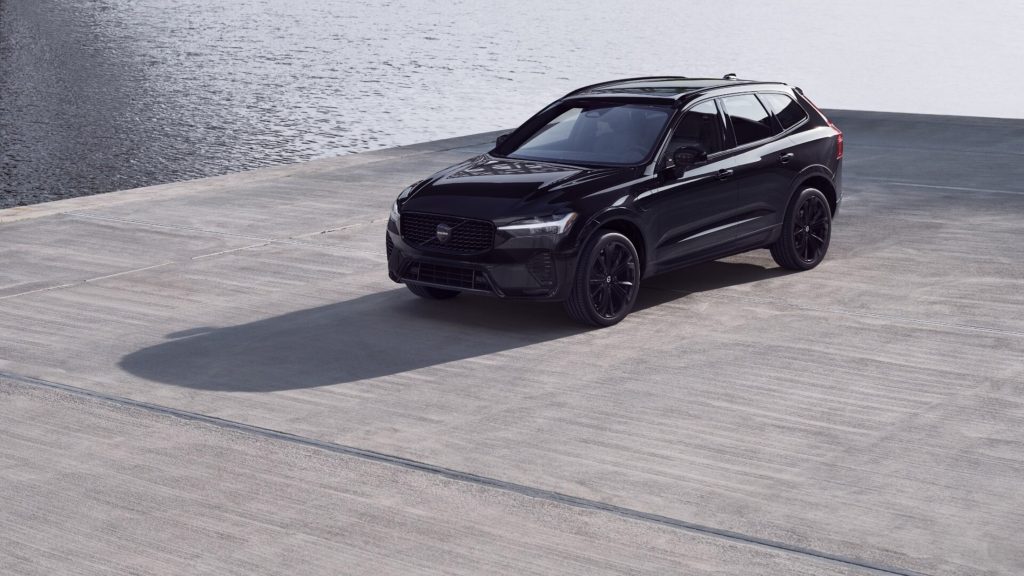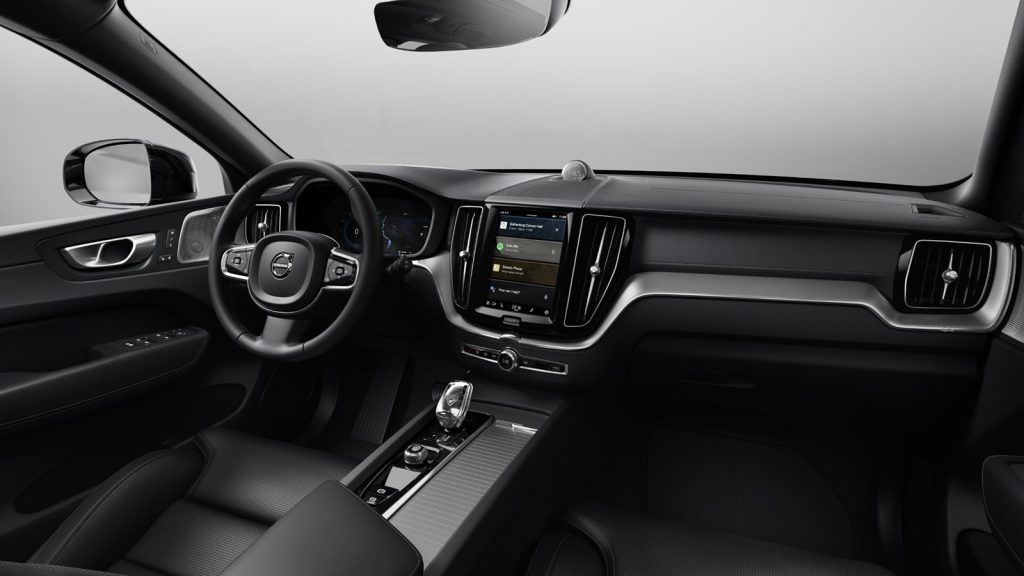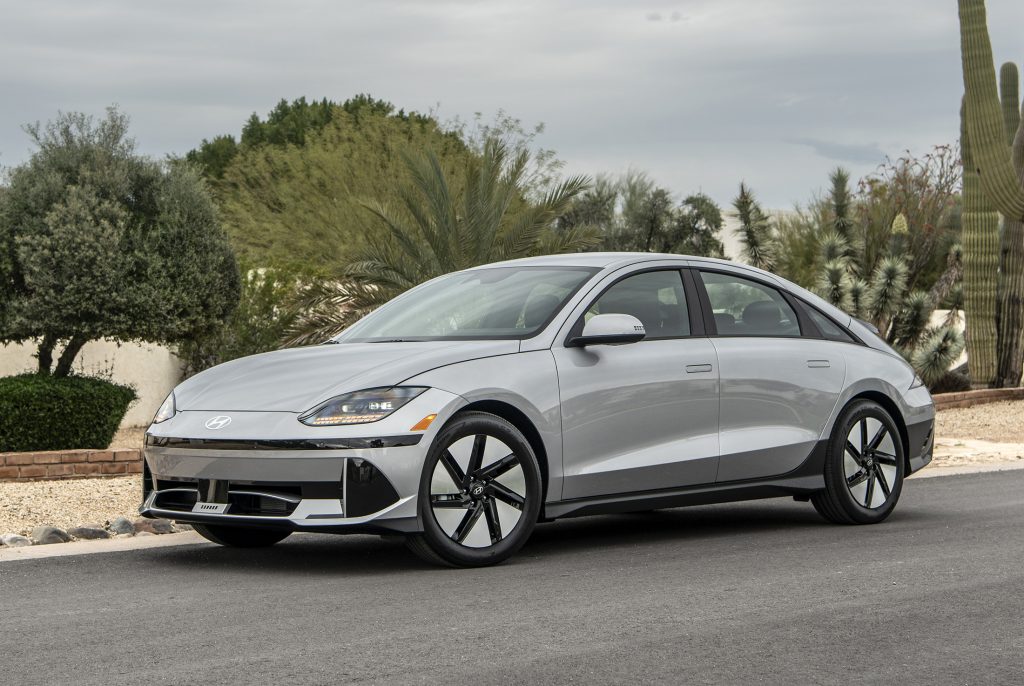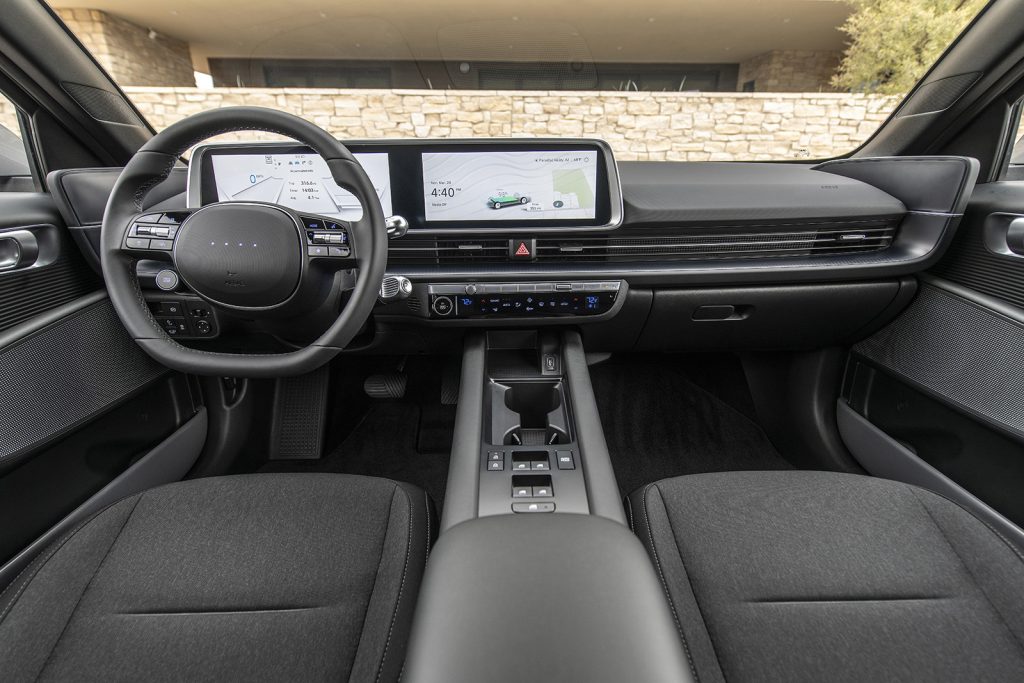Cargazing
By Derek Price
Volvo has come a long way from its days of building slab-sided, box-like cars.
Today’s Volvos have a sleek, sophisticated style that embraces the simple beauty of modern
Scandinavian design. Compared to flashy, maximalist luxury cars, they seem tastefully restrained.
For the current generation XC60, a two-row crossover that was named World Car of the Year when it was introduced a few years ago, things get even more stylish with the introduction of the Black Edition for 2024.
The Black Edition isn’t exactly new. Volvo offered a similar look on its S60 sedan in the past, and other car companies have added special blacked-out versions in recent years to goose their sales.
The Black Edition package seems especially fitting on the XC60, though, with understated elegance already built into its lines. Monochrome black only adds to its delightfully uncomplicated visual appeal.
Outside, Onyx Black paint is paired with glossy black trim, including the Volvo logo and word mark.
Unique 21-inch wheels give it a sporty look.
Inside, the same theme continues with a black headliner and charcoal leather seats.
Unfortunately for penny pinchers, you can only order the Black Edition as an upgrade to the top-level Ultimate trim, though.

Volvo is adding a sinister-looking Black Edition to its XC60 lineup for 2024, which includes 21-inch wheels and blacked-out trim and badges.
The XC60 offers two terrific choices for powertrains.
One is a turbocharged, mild-hybrid four-cylinder engine called the B5. It makes 247 horsepower, enough for good acceleration and 3,500 pounds of towing capacity.
The second is a plug-in hybrid powertrain called the T8. It makes 455 horsepower and a pavement-crumpling 523 pound-feet of torque, but it also lets you drive up to 35 miles on pure electric power. If you keep it charged at night, that’s like having an EV for local drives and a powerful gasoline engine for longer trips, all in the same vehicle.
The base B5 engine is rated for 25 mpg in combined city and highway driving, not bad for a heavy luxury crossover.
The powerful T8 gets even better marks from the fuel-measuring wonks in Washington. It’s rated for 28 mpg combined under gasoline power, or the equivalent of 63 mpg if you take advantage of its battery power.

The Black Edition carries into the cabin, where a dark headliner and charcoal leather seats contrast nicely with Volvo’s trim materials.
In the real world, the XC60 T8’s gas mileage varies dramatically based on how you drive it. If you keep it charged and stick close to home, you’ll almost never burn gasoline. If you regularly take long trips, you’ll stay somewhere closer to the 28-mpg rating.
My tester, which came with the T8 plug-in hybrid powertrain, was a delight to drive. Volvo has learned how to eke the most power and excitement from the least amount of gasoline.
Even with the Black Edition’s 21-inch wheels — a size big enough to ruin the ride on some luxury vehicles — I thought the XC60 had a perfect combination of stiffness when cornering and softness in straight lines.
Downsides? They’re almost nonexistent from my perspective.
Volvo’s newest cars, including the XC60, often get panned in reviews for their Google-based technology. Even though I’ve been an Apple person since I was a kid in the 1980s, the Google-designed interface in the latest XC60 didn’t bother me a bit. It was intuitive and quick to respond.
While the graphics aren’t as beautiful as in the older Sensus system Volvo used to deploy, the technology didn’t cause any problems for me. I’m guessing people with Android phones will find it even easier to use than I did.
In fact, the biggest downside I see is that the XC60 isn’t priced for the masses. The base version starts at $46,900, which is a lot more than some great Japanese, Korean and American two-row SUVs in the $30,000 range.
The plug-in hybrid T8 version starts at $57,900.
If you want the stylish new Black Edition, it starts at $57,500 with the B5 engine or $68,950 with the T8. It also comes with all the safety, tech and luxury features that are part of Volvo’s top-line Ultimate trim level.
At A Glance
What was tested? 2024 Volvo XC60 Recharge AWD Ultimate ($68,950). Options: Climate package ($750), power tailgate ($200), air suspension ($1,800), Bowers & Wilkins sound system ($3,200), massage seats ($600). Price as tested (including $1,195 destination charge): $76,695
Wheelbase: 112.8 in.
Length: 185.4 in.
Width: 74.9 in.
Height: 38 in.
Power: Turbocharged 2.0-liter engine plus electric motors (455 hp, 523 ft. Lbs.)
Transmission: Eight-speed automatic
Fuel economy: Combined 63 MPGe
Ratings
Style: 8
Performance: 9
Price: 6
Handling: 7
Ride: 7
Comfort: 7
Quality: 9
Overall: 8
Why buy it?
The XC60 offers head-turning Scandinavian looks in a utilitarian SUV package. Everything about it has a premium feel, including a lineup of strong and efficient engines.




